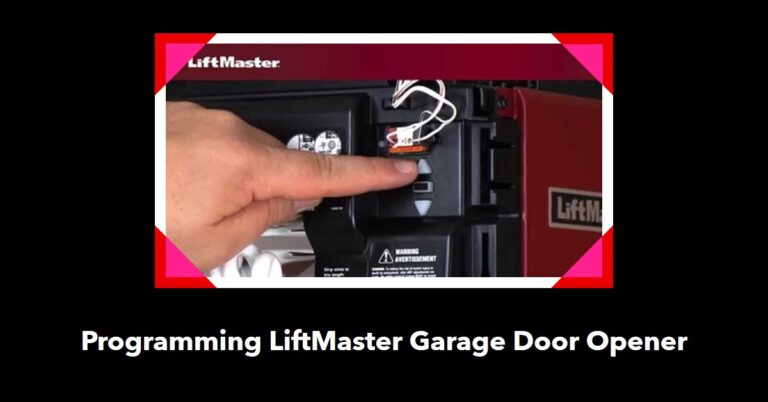Alright, folks, let's talk garage doors! Specifically, wrestling that stubborn Liftmaster garage door opener into submission. We're going to make this so easy, you'll feel like you've unlocked a superpower.
Gear Up: Your Mission Toolkit
First things first, gather your tools. You'll probably need a screwdriver (Phillips head is your friend). And maybe a ladder, depending on how tall your garage is – safety first, future garage door whisperers!
Got 'em? Excellent! Let's move on.
The Limit is (Not) the Sky: Adjusting Travel Limits
Now, find the buttons on your Liftmaster opener labeled "Up" and "Down" (or something similar, manufacturers like to get creative). These control how far your door travels.
Your door is slamming shut like a dramatic villain? You'll want to adjust the "Down" limit. It's a simple tweak to prevent garage door theatrics.
Door stopping too soon? The "Up" limit is the culprit. Picture your garage door as a determined athlete, but you're the coach helping it reach peak performance. A little adjustment here, a little adjustment there.
The Nitty-Gritty: Turning Those Screws
These buttons usually have corresponding adjustment screws nearby. Turn them a little at a time. Clockwise usually means the door will travel less, counter-clockwise means more – but check your manual to be sure, because sometimes manufacturers like to keep us on our toes!
After each tiny turn, test the door. We're talking baby steps here. Like teaching a robot to dance, patience is key.
Feeling the Force: Adjusting the Force Settings
Next, let's talk about force! Your garage door opener has a "Force" setting, which determines how much oomph it uses to open and close.
This is important for safety, especially if you have kids or pets who might accidentally get in the way. We don't want any garage door mishaps!
Find the "Force" adjustment knob (it's often near the travel limit buttons). If your door reverses easily, the force is too low. If it struggles to open or close, the force is too high.
Finding the Sweet Spot
Turn the knob a tiny bit, then test the door. The goal is to find the sweet spot. The door should open and close smoothly, but reverse easily if it encounters an obstruction.
A good test? Gently place a 2x4 on the ground where the door closes. The door should stop and reverse when it hits the wood. It's like a garage door obstacle course, but way safer!
Light It Up: Taming the Safety Sensors
Almost there! Now, for the safety sensors at the bottom of the door. These little guys are crucial. They prevent the door from closing if something's in the way.
Make sure they're aligned and clean. Sometimes a rogue leaf or cobweb can interfere with their signal. Give them a quick wipe-down.
If the sensors are misaligned, the opener won’t work. You'll know if this is the problem if the opener light flashes and the door won’t close.
Sensor Alignment Tango
Check each sensor to see if the indicator light is on. If one is off, carefully adjust the sensors until both lights are solid. It's like a delicate dance between light beams.
Sometimes the wires connecting the sensors to the opener can become loose. Give them a wiggle to make sure they're securely attached. A loose wire is a grumpy wire!
Victory Lap: Enjoy Your Perfectly Balanced Door
Congratulations, you've successfully adjusted your Liftmaster garage door opener! Give yourself a pat on the back.
Now, stand back and admire your handiwork. A smoothly operating garage door is a beautiful thing.
And remember, if you ever feel overwhelmed, don't hesitate to call a professional. But with a little patience and these simple steps, you can conquer that garage door like a boss!


























